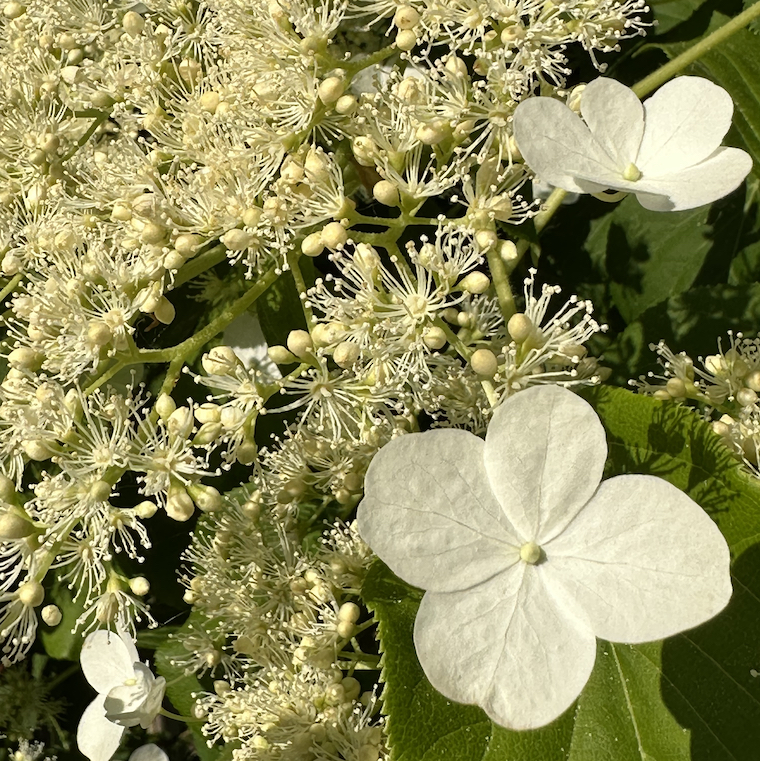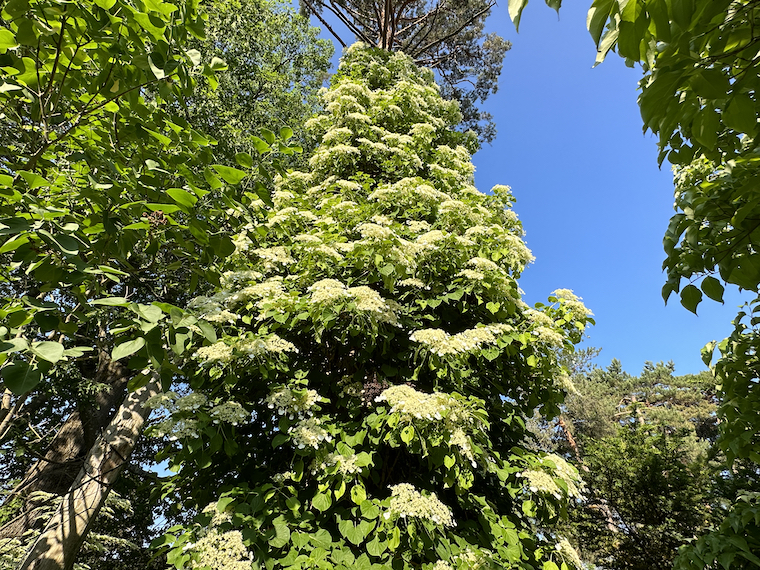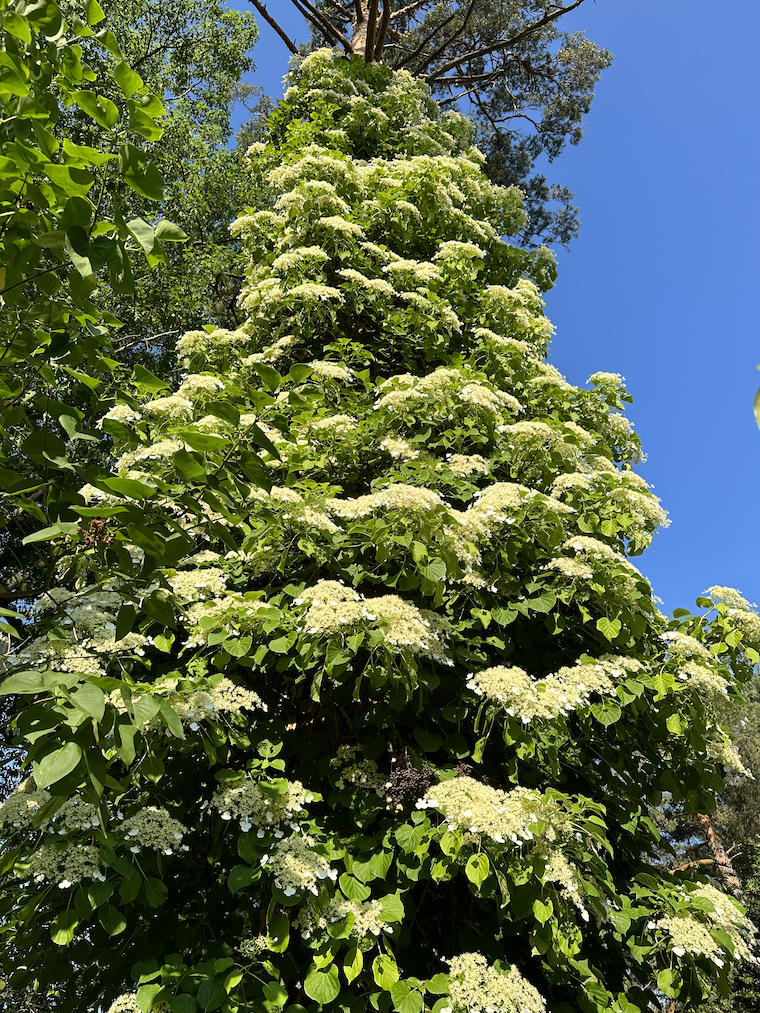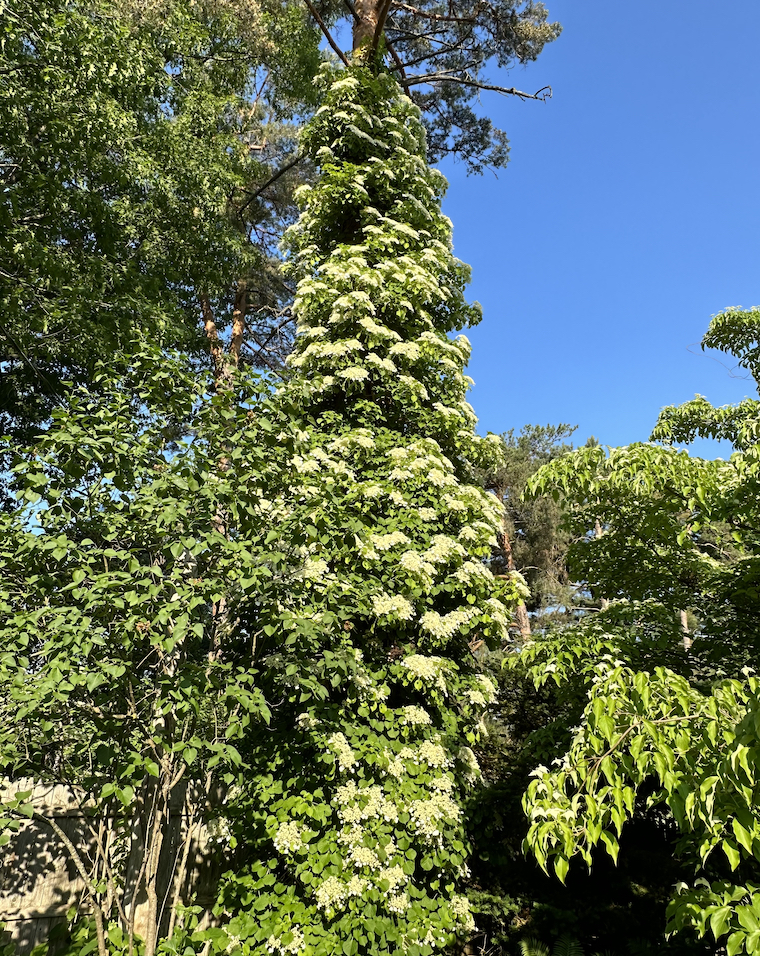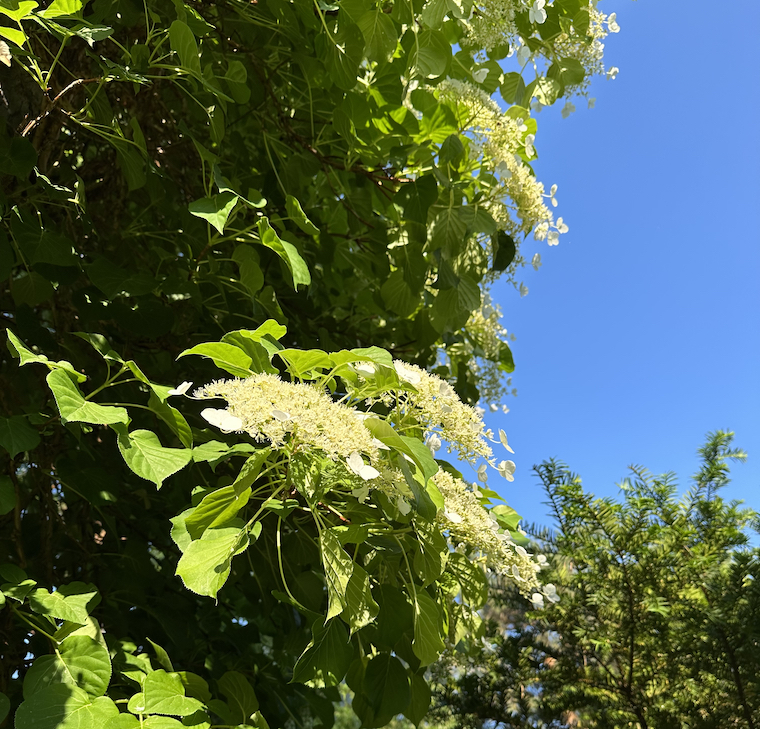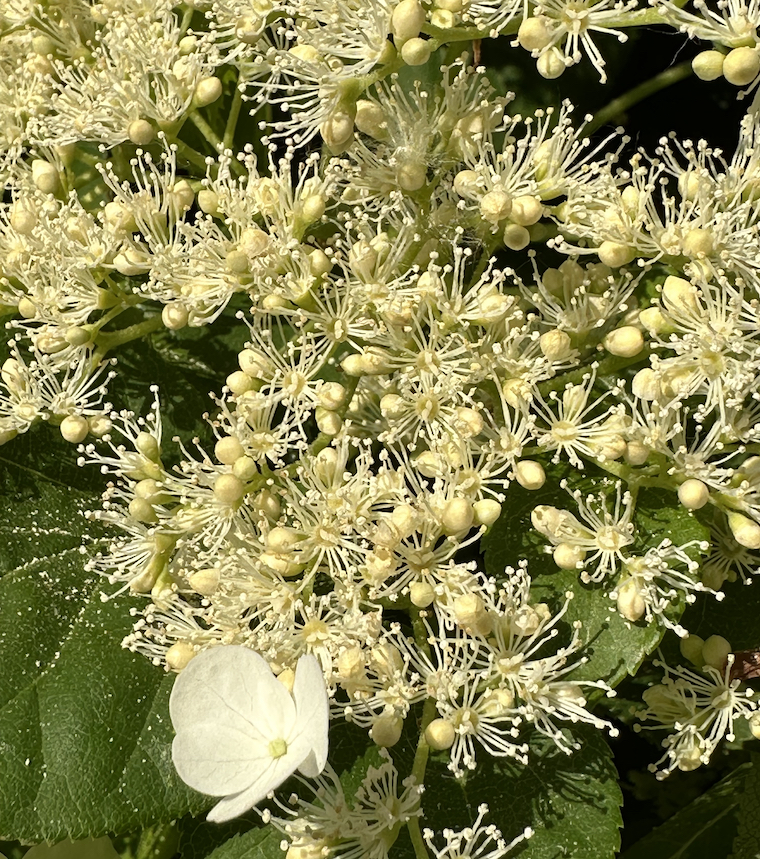One of the very first things I planted when we first moved into our home in 2002 was a climbing hydrangea. I placed it at the base of a towering old pine tree that was bare for the bottom two-thirds of its enormous trunk, leaving ample room for the antics of this not-so-social climber. Like many vines, this one adheres strictly to the following schedule:
- The first year it sleeps.
- The second year it creeps.
- The third year it leaps.
Let’s talk about that first year. Soil preparation is essential, as this is an investment that may last a very long time. I dug as deeply as possible, amending abundantly but carefully so as not to run the risk of burning the roots with too much manure. Then I watered, and kept watering, even when it seemed like nothing was happening. The first summer of a climbing hydrangea planting should never be dry. It rewarded me with little to no growth, but I had faith, so I kept at it, pampering and caretaking despite lack of any visible growth.
The second year I applied an early spring amendment – a half bag of manure worked into the top of the soil, then a heavy mulch to keep things cool and moist. And then I kept up the watering schedule. There was a bit more growth – the creep had begun. Branches leaned into the tree, finding comfort and footing on its rough bark, sending out some aerial roots for stability and support. The tree itself seemed a bit happier to have such a companion, as its roots were getting all the excess nutrients they would have otherwise gone without.
For that second summer, while there was some additional growth on the top, it wasn’t robust or substantial, so it was important to keep up the watering even without much to show for it. This sort of blind faith is the key to success for many a gardener. We amend and prepare and work for something that may not produce any visible result for years – and such lessons have been incalculably valuable in bolstering my patience and working towards things that don’t come with immediate rewards.
The third year there was indeed a leap, but it was a leap of foliage and branches, devoid of flowers. Starting with such a young specimen means flowering may not commence for several years – something that isn’t explained or explored in the nursery rhyme of growth pattern. I didn’t really mind (ok, I may have minded a little) but mostly I was just happy it was doing well and finally climbing several feet, lending the previously barren tree trunk new life and prettiness. Again, I worked organic matter into the surrounding soil and kept it regularly and well watered, especially during dry spells.
It was the fourth or fifth year that the first flowers appeared – their lace-caps delicate and airy, their perfume light and sweet – and then the true magic began to happen. As it climbed vertically a couple of feet each year, it also began to send out branches that extended outward from the trunk, and they arched and dangled flower heads up and down the entire length of the vine. The rewards began at the half-decade mark – a waiting period most people today scoff and deride as impossible, but one that seems to me a rather small wait for something so gloriously beautiful.
Today this gorgeous specimen stands at a towering thirty to forty feet in the air, perfuming that entire corner of our yard. At twenty-one years of age, she is older than this website by one year, and will probably outlast it as she shows no signs of letting up. I don’t pamper her as I once did – she no longer needs it, providing a hefty bit of shade to keep her own roots cool and moist. Every few years I’ll do a thick top-dressing of manure to keep her roots happy and well-fed for all the beauty she has provided us. All this time later, we are still taking care of each other.
Back to Blog
